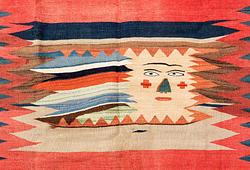Helene Schjerfbeck
Roses in a vase
Signed with monogram HS. Pastel 33 x 24 cm
Saleroom notice
Privat collection, Sweden. (Bought in 1946/47)
Bukowski International Springauction, 1987, no 301.
Privat collection, Finland (acquired from the above sale).
Provenance
Privat collection, Sweden. (Bought in 1946/47)
Bukowskis AB, auction 450, "Bukowski International Springauction", 7-10 April 1987, no 301.
Privat collection, Finland (acquired from the above sale).
Exhibitions
Omat klassikot, Pyrri, Savonlinnan näyttelykesä r.y., 1988.
Literature
Bukowskis AB, auction 450, "Bukowski International Springauction", 7-10 April 1987, catalogue no 301, illustrated in colour.
More information
Helene Schjerfbeck painted still life with flowers and fruits during her whole life, from the 1880s nature mortes to the more independent and experimental paintings of fruits that she created towards the end of her life. The still lifes are very important in understanding her art and are amongst her most daring and vital works.
Still life, as a genre, suited Schjerfbeck well and she enjoyed them as a refreshing change to her more usual motifs of portraits and landscapes. She had a strong sensibility for nature and was greatly attracted to how the flowers looked. Fruits and flowers were also unlike her models -- easy to arrange, and instead of being forced to fill the composition with a narrative, she could wholeheartedly focus on the actual painting itself. The only problem was that Schjerfbeck's long and careful process often meant that the flowers came to wilt and the fruits to rot, and many times she had to finish the paintings from her memory.
The natural forms allowed Schjerfbeck to explore the relationship between colours and forms and the still lifes are often executed with a free and natural technique that is rarely seen in her other motifs. In the present lot, a pair of bright yellow roses is placed in a vase that is reflected against the table that it stands on. The roses are brought back to life with Schjerfbeck's skillful handling of colour, and a shining light appears to glow from within them. The simplified shapes and careful use of colours lets the light and colour burst out vividly in the composition.


































